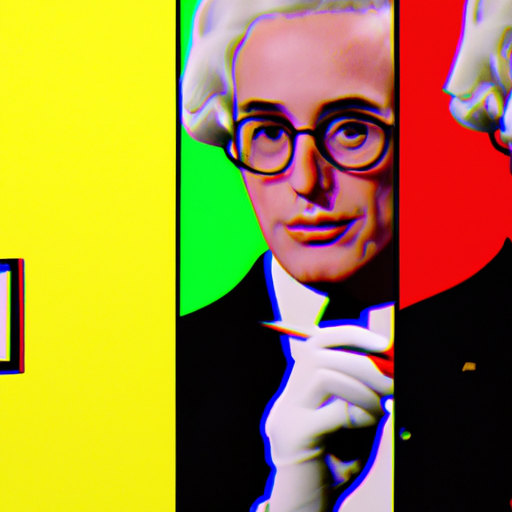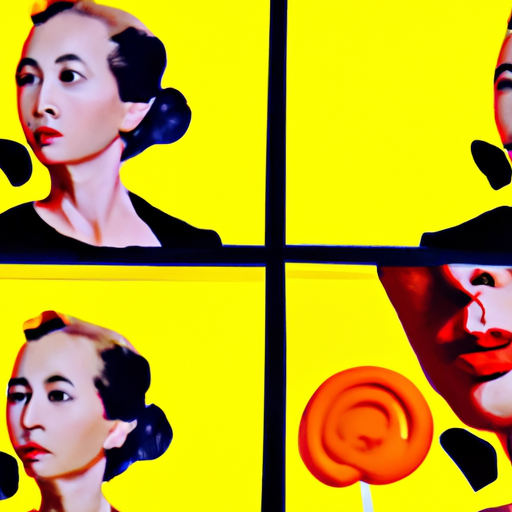
-
Table of Contents
Integrating Pop Art Elements in Modern Graphics

Pop art is a movement that emerged in the mid-1950s in the United States and the United Kingdom. It challenged traditional notions of art by incorporating popular culture and everyday objects into artistic creations. With its bold colors, iconic imagery, and playful style, pop art continues to inspire and influence modern graphic design. In this article, we will explore the integration of pop art elements in modern graphics, examining its history, key characteristics, and the impact it has on contemporary design.
The Origins of Pop Art
Pop art emerged as a reaction against the dominant abstract expressionism movement of the time. Artists sought to break away from the elitism of high art and instead celebrate the mundane and ordinary. They drew inspiration from popular culture, advertising, comic books, and consumer products.
One of the pioneers of pop art was Andy Warhol, whose iconic Campbell’s Soup Cans and Marilyn Monroe portraits became symbols of the movement. Other notable pop artists include Roy Lichtenstein, Claes Oldenburg, and Richard Hamilton.
Key Characteristics of Pop Art
Pop art is characterized by several key elements that make it instantly recognizable:
- Bold Colors: Pop art often features vibrant and eye-catching colors. Artists used bright hues to grab the viewer’s attention and create a sense of excitement.
- Repetition: Many pop art pieces incorporate repeated images or patterns. This repetition emphasizes the mass-produced nature of consumer culture.
- Iconic Imagery: Pop art frequently uses recognizable symbols and icons from popular culture. This includes celebrities, comic book characters, and famous products.
- Collage and Mixed Media: Pop artists experimented with different materials and techniques, often incorporating collage and mixed media elements into their work.
- Humor and Irony: Pop art often employs humor and irony to critique consumerism and mass media. It challenges the viewer to question the value and meaning of popular culture.
Integration of Pop Art Elements in Modern Graphics
The influence of pop art can be seen in various forms of modern graphic design, including advertising, branding, and digital art. Designers often incorporate pop art elements to create visually striking and engaging compositions. Let’s explore some examples of how pop art is integrated into modern graphics:
Advertising
Pop art’s bold colors and iconic imagery make it a perfect fit for advertising campaigns. Brands often use pop art-inspired graphics to grab attention and create a memorable visual impact. For example, the Absolut Vodka campaign in the 1980s featured pop art-inspired illustrations by various artists, including Andy Warhol.
Another example is the “Got Milk?” campaign, which used pop art-inspired illustrations of celebrities with milk mustaches. The campaign successfully combined the recognizable style of pop art with a clever and memorable tagline.
Branding
Pop art elements can also be found in branding and logo design. Companies looking to convey a sense of fun, creativity, and modernity often incorporate pop art-inspired graphics into their visual identity. The use of bold colors, repetition, and iconic imagery helps create a strong and memorable brand presence.
One notable example is the logo of the music streaming service Spotify. The logo features a series of green sound waves arranged in a circular shape, reminiscent of the repetition and vibrancy often seen in pop art.
Digital Art
Pop art has also found its way into the world of digital art. Artists and designers use digital tools to create pop art-inspired illustrations, animations, and interactive experiences. The digital medium allows for even more experimentation and creativity, pushing the boundaries of what pop art can be.
For example, the artist James White combines pop art aesthetics with futuristic elements in his digital illustrations. His work often features bold colors, geometric shapes, and references to popular culture, creating a unique blend of old and new.
The Impact of Pop Art on Contemporary Design
The integration of pop art elements in modern graphics has had a significant impact on contemporary design. Here are some key ways in which pop art continues to influence and shape the design landscape:
- Visual Impact: Pop art’s bold and vibrant style grabs attention and creates a strong visual impact. This is particularly important in today’s fast-paced and visually saturated world, where designers need to capture the viewer’s attention quickly.
- Playfulness and Creativity: Pop art’s playful and irreverent approach to art inspires designers to think outside the box and embrace creativity. It encourages experimentation and pushes the boundaries of traditional design conventions.
- Engagement and Memorable Experiences: By incorporating pop art elements, designers can create engaging and memorable experiences for their audience. The use of recognizable symbols and humor helps establish a connection with the viewer and leaves a lasting impression.
- Critique of Consumer Culture: Pop art’s critique of consumerism and mass media continues to resonate in contemporary design. Designers can use pop art elements to challenge the status quo and question the values and meaning behind popular culture.
Summary
Pop art, with its bold colors, iconic imagery, and playful style, has had a lasting impact on modern graphic design. Its integration in various forms of design, including advertising, branding, and digital art, has helped create visually striking and engaging compositions. Pop art’s influence can be seen in the use of bold colors, repetition, iconic imagery, and humor in contemporary design. By incorporating pop art elements, designers can create visually impactful, playful, and memorable experiences for their audience while also challenging the values and meaning of popular culture.
